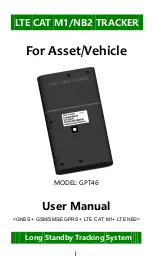PD-20001-R1
Stagetracker II User Manual
17
6
Planning the Stagetracker II
™ installation
TTA is happy to assist on the planning of the installation, contact via email to [email protected]
When planning an installation, the most critical decision is the positioning and number of
Stagetracker II™
RadioEyes.
The three important parameters
1
when calculating coverage are:
1)
RE opening angle,
𝜃
. A RE has an opening angle of +/- 50 degrees. The usable region is much like light from a
spotlight, projecting a pyramidal shape.
2)
Reading range. The maximum reading range is 200 meters.
3)
Angular resolution,
∆𝜃
, of 0.1
⁰
. This parameter describes the separation needed between two tags for the RE to
detect them as separate. This parameter is set by the processing SW. Output accuracy is heavily influenced by the
positioning algorithms / filter bandwidths.
Figure 15 Illustration of RE coverage. The pyramid is cut at approximately tag height
It is important that there are no objects close to the RE within an angle of +/- 60 degrees. Presence of any such objects
may distort the positioning accuracy of the system. See figure 17 for example of RadioEye installation.
Figure 16 Illustration of RadioEye installation
1
See data sheet for correct parameter values. Numbers used in these calculations are for illustration purposes.


















